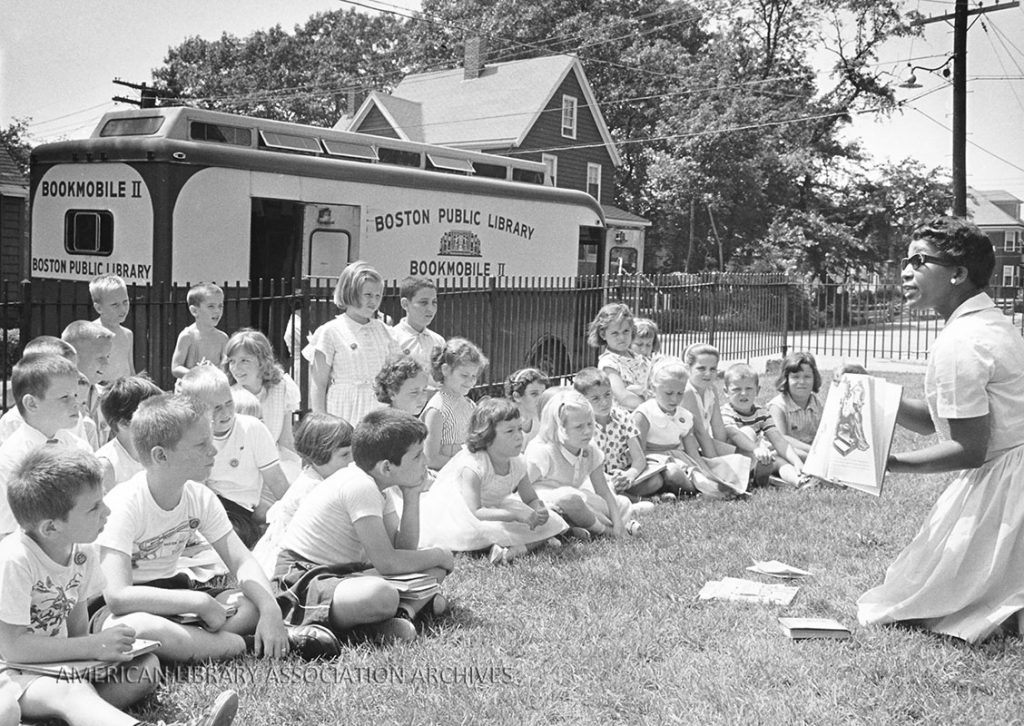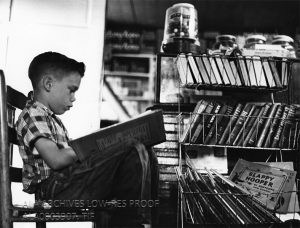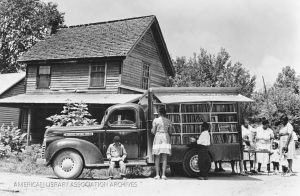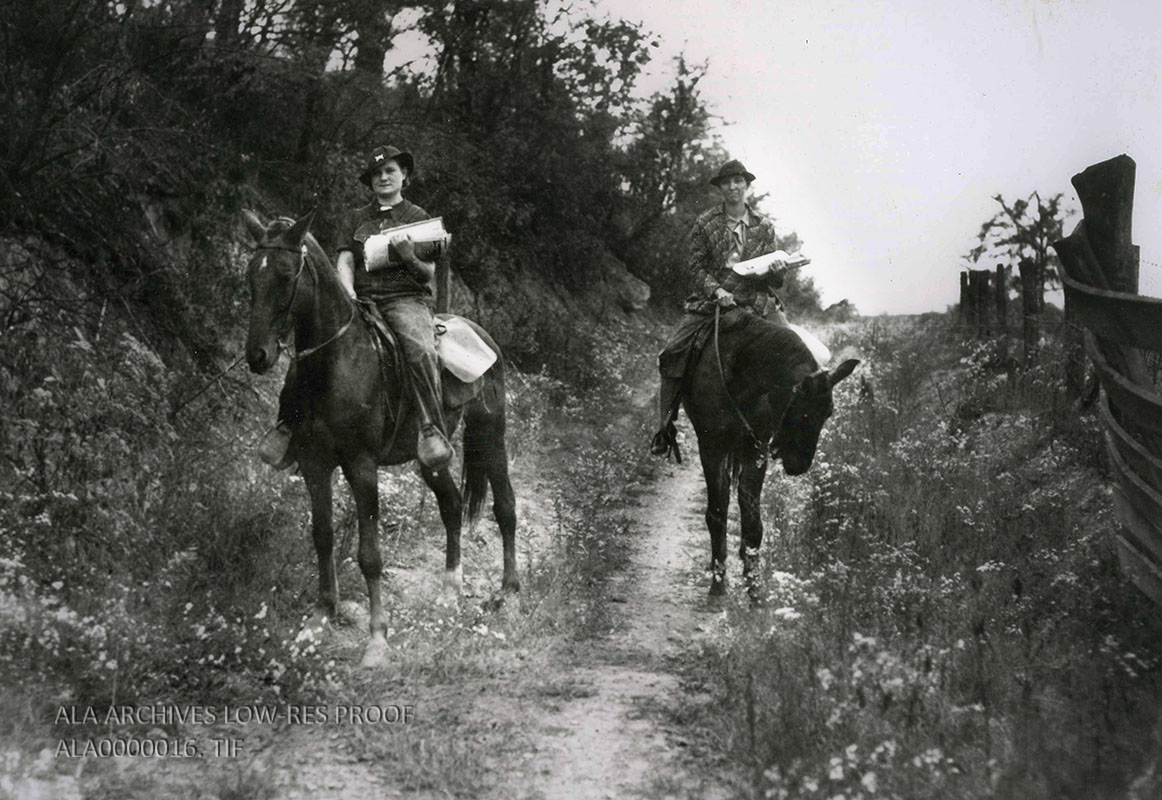
The ALA Archives has an exhibit up this month up in the Marshall Gallery at the University of Illinois Library. Traveling Libraries: The Library Extension Board and Rural Library Service explores the varied history of the Library Extension Board and library extension services in the United States. You can see of preview of the exhibit content here, but be sure to stop by the Marshall Gallery June 1-30 to view the exhibit. You can also visit the American Library Association Archives to find more materials from the Library Extension Board.


Deposit stations, small collections of library materials in stores and other central locations, were a key part of library extension service. These usually consisted of a few shelves of books in a public location that community members could check out themselves or from an attendant. Deposit stations were a smaller alternative to branch libraries, and were maintained by county, regional, or state librarians who periodically replenished and changed out the books available. Deposit stations could be found in outdoor deposit boxes (similar to today’s community take-a-book, leave-a-book libraries) or in businesses, and especially grocery and general stores. Deposit stations in shops placed library access in community spaces where people could access books and library materials conveniently as part of their regular errands.

winter months to camps in high Sierras.” Fresno County, California
No date. Found in RS 18/1/57 Box 11.
Bookmobiles were (and still are!) a popular and well-known method of library extension service. Book trucks based out of county and state libraries traveled far and wide making stops at schools, community centers, and rural homes. Some vehicles were refitted buses which patrons would enter to choose books. Others had panels that opened to reveal packed shelves, or shelves that rolled out of the back of the van. Bookmobiles a versatile alternative to building branch libraries, as they could be cheaper to staff and maintain while bringing library service to a wider geographic area than a branch library could serve. Librarians with book trucks also replenished deposit stations, and librarians on horseback (or traveling by dog team, as seen above) took books beyond the reach of paved roads to replenish remote deposit stations.

To see more materials from on the Library Extension program, visit our exhibit in the Marshall Gallery of the University of Illinois Library, on view June 1-30, and visit the ALA Archives to see the full collection!